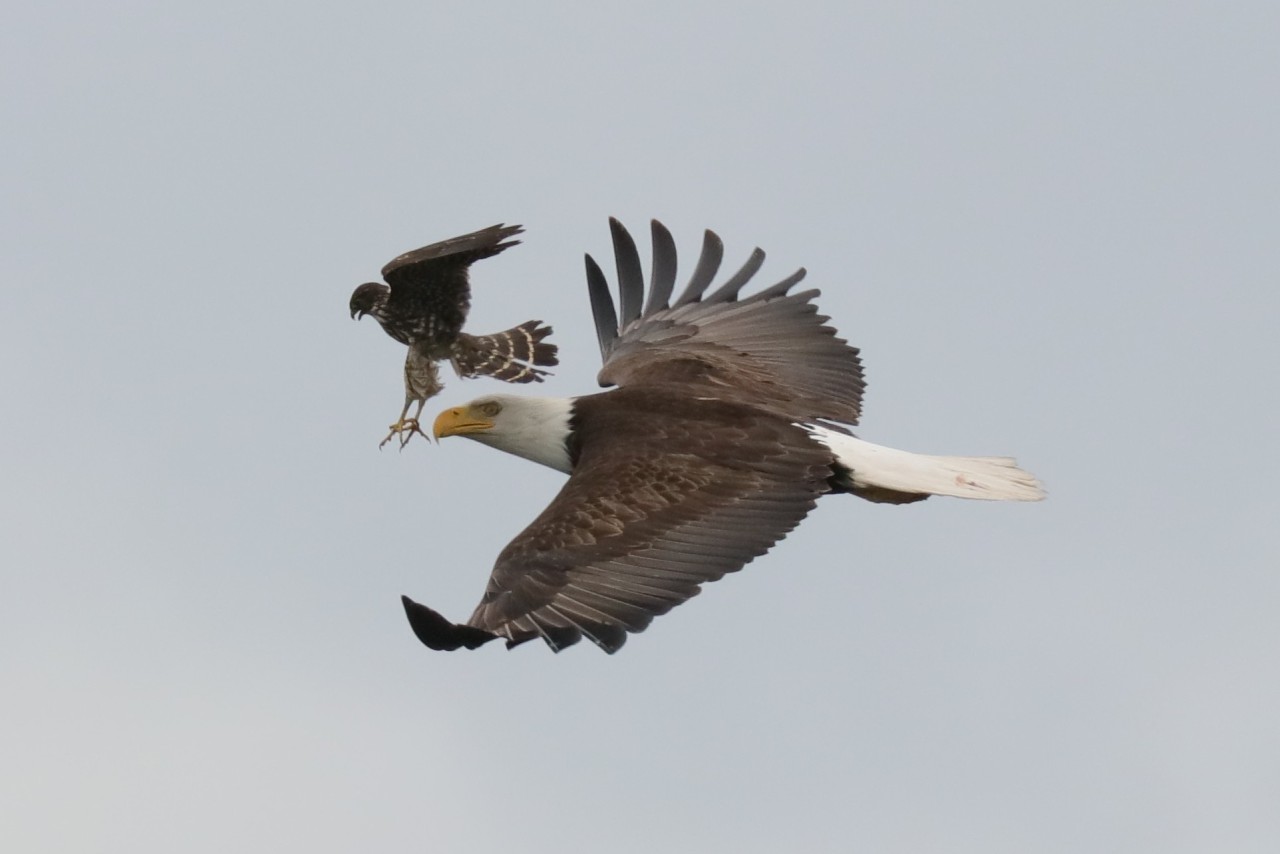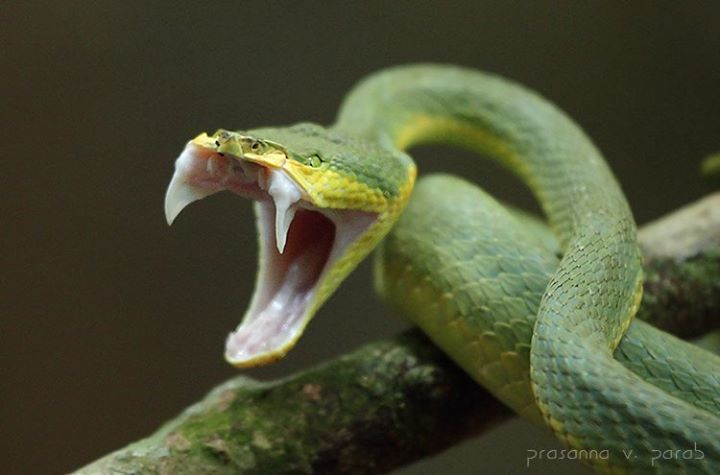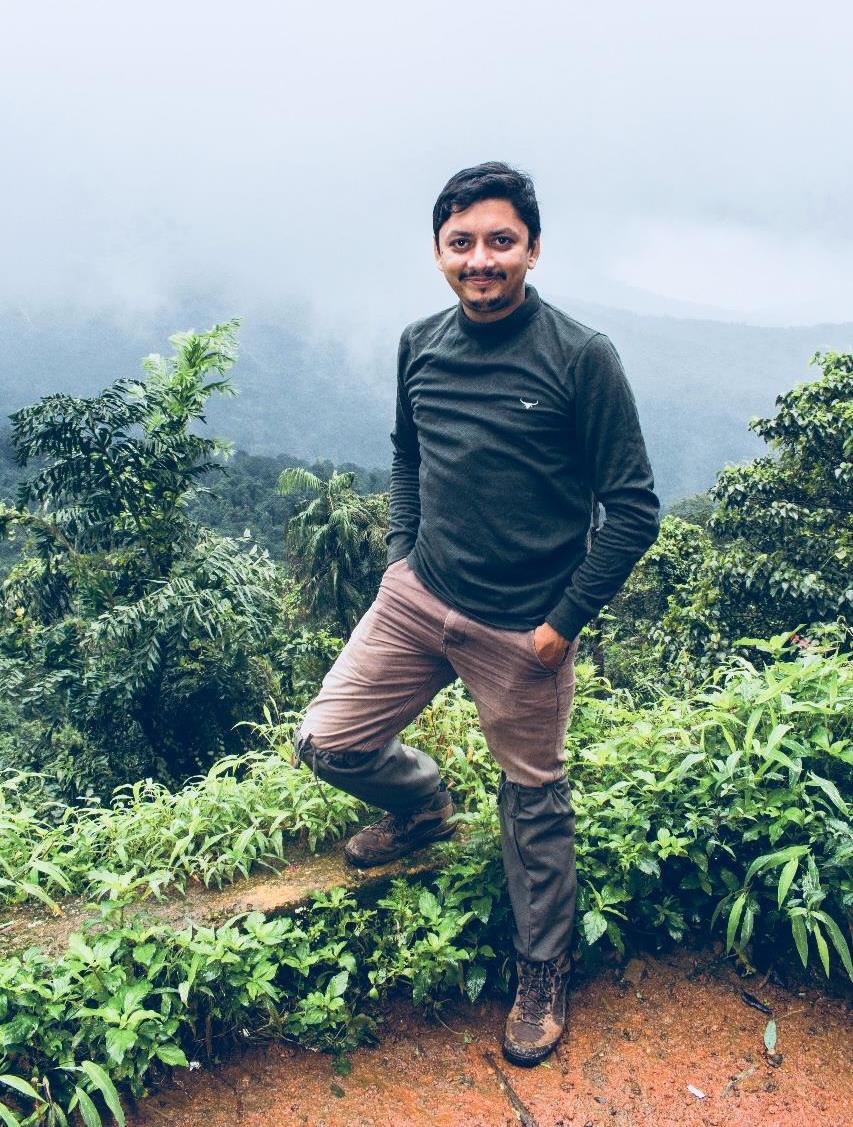A Merlin Fly-by: Observation of the Week, 1/4/19

iNat user @nanorca13 took this amazing photo of a merlin harassing a bald eagle in Canada and it’s our Observation of the Week!
Sorry for the holiday-induced delay, folks, but Observation of the Week is back for 2019!
Although he’s always been interested in nature, “from spending summers on the farm in southern Saskatchewan when I was a kid with the pronghorn and coyotes to trips to the beach here on Vancouver Island,” Warren Cronan says “I literally got into my obsession about six years ago when I injured myself running trails up the mountain. So because I couldn't run I grabbed my little camera and started hiking and taking pictures.”
As his interest in photography grew, Warren upgraded his gear and began posting his photos to iNaturalist in 2015.
Birding has become my main focus of interest and the merlin observation and pictures with the eagle happened while I was looking off the back deck of my parents’ house. This was not the first time I've seen a merlin chasing an eagle here in the middle of Nanaimo...I believe the eagle got too close to the the trees where the merlins had a nest and were spending the summer. I kept taking pictures of the eagle until the merlins finally chased him off...I got some great pictures of the eagle and a few with a merlin in the pic with him. I'm glad others have enjoyed it.
A type of falcon, the merlin is a small - wingspan about 50–73 cm (20–29 in) - but quick and aggressive bird that often hunts other birds on the wing and is known for fiercely defending its territory from other raptors. Pete Dunne, in his Hawks in Flight (with David Sibley and Clay Sutton), writes “An observer may use this aggressive tendency for identification purposes and as a means of detection. High-flying merlins often betray themselves and distinguish themselves because they are vigorously harassing another raptor (even ones as large as the Golden Eagle).” Merlins are found throughout both Eurasia and North America.

“I almost always have my camera handy and ready no matter where I am,” says Warren (above, with said camera), “and my ability to track birds in flight has improved considerably over the last few years.” He uses iNaturalist as a place to organize and share his observations, as well as get ID help from other users, but says “as much as I get out of posting my observations and following others, it is being out in nature observing that I live for, and capturing an interesting shot is just icing on the cake.”
- by Tony Iwane. Some quotes were lightly edited for clarity.
- Here’s some great footage of a merlin hunting and feeding its chicks.
- And this osprey nest cam video of an attacking bald eagle shows you exactly why birds don’t want bald eagles around their young. This video may be difficult to watch for some.
- Falcons and eagles may look and behave similarly, but they are only distantly related if you delve into their genes. Falcons are in fact much more closely related to parrots.








